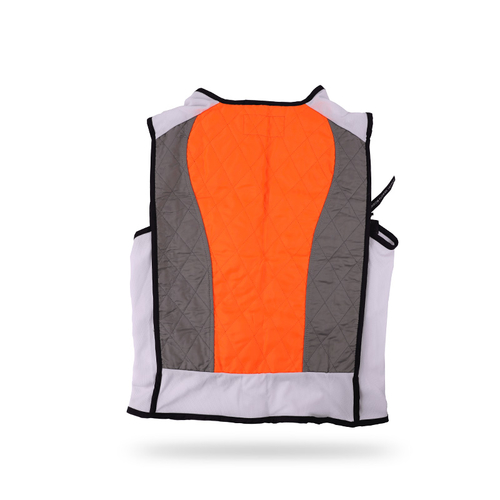A reflective vest is more than just a piece of high-visibility clothing; it is a critical component of personal safety across countless industries and activities. Its simple yet highly effective design harnesses the power of retroreflectivity to ensure the wearer is seen, dramatically reducing the risk of accidents in low-light conditions or busy environments.
Understanding Retroreflection and the Vest’s Construction
The core technology behind the efficacy of a reflective vest is retroreflection. Unlike simple reflection, which scatters light in many directions, retroreflection directs light back toward its source, making the light appear much brighter to the person holding the light (like a driver). This is achieved through specialized materials, typically incorporating tiny glass beads or prismatic materials embedded into the reflective striping.
The vest itself is usually made from fluorescent material (often yellow-green or orange) to maximize daytime visibility. The combination of the fluorescent color for daylight and the reflective stripes for nighttime or poor-light conditions provides 24-hour visibility protection.
Safety Standards and Compliance
The design and performance of a reflective vest are governed by rigorous international and national standards to ensure they provide adequate protection. In the United States, standards are set by the ANSI/ISEA 107 specification, while in Europe, the standard is EN ISO 20471.
These standards classify vests based on the amount of background and retroreflective material they contain, which corresponds to the working environment’s hazards and required visibility distance.
- Class 1: Provides the minimum amount of reflective material, suitable for non-complex work environments.
- Class 2: Provides enhanced visibility and is appropriate for workers near roadways where traffic speeds are less than 50 mph.
- Class 3: Offers the highest level of visibility, required for workers exposed to high-speed traffic or in extremely high-risk, low-visibility conditions.
Choosing the correct class of reflective vest is crucial for compliance and optimal safety.
Diverse Applications and Wearers
While commonly associated with construction workers and road crews, the application of the reflective vest extends far beyond these traditional roles:
- Emergency Responders: Police, fire, and paramedic personnel rely on them to remain visible at accident scenes.
- Logistics and Warehousing: Workers operating forklifts or moving heavy loads in dimly lit warehouses benefit from increased visibility.
- Recreational Users: Cyclists, runners, and pedestrians use them to drastically increase their presence on roads, particularly at dawn, dusk, or night.
- Utility Workers: Individuals maintaining power lines, gas lines, or water infrastructure often wear a reflective vest to ensure their safety near traffic or equipment.
In every scenario, the function remains the same: to create an unmissable visual cue, allowing others to react appropriately and prevent injury. By investing in and correctly utilizing a certified reflective vest, organizations and individuals are taking a proactive step toward a safer working and recreational environment.

 English
English 简体中文
简体中文








 3rd Floor, East Gate, No. 2599 Park Road, Sheng Ze Town, Wu Jiang District, Suzhou City, Jiangsu Province
3rd Floor, East Gate, No. 2599 Park Road, Sheng Ze Town, Wu Jiang District, Suzhou City, Jiangsu Province  +86- 0512-63519080
+86- 0512-63519080
 +86-13584404311
+86-13584404311  FQsales1@163.com
FQsales1@163.com